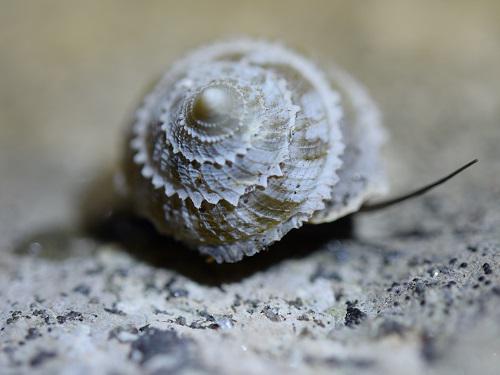Jane Herrera Uria
Other projects
18 Jun 2014
Conservation Status and Geographic Distribution of the Endemic Land Snails Species of the Isla de la Juventud, after Hurricane ''Ike'', in Cuba
The project aims at assessing the actual conservation status of the terrestrial malacofauna and environmental education in rural communities.

Priotrochatella stellata.
Terrestrial malacofauna from Isla de la Juventud is characterized by to be diverse and to possess many endemic species, some belonging to unique genera as Pineria. In previous fieldwork, we studied the geographical distribution and conservation status of this important invertebrate group. Unfortunately, increasing evidence suggests that most of these endemic land snails are vulnerable because are confined to narrow geographical ranges and these landscapes are mostly fragmented by marmoreal exploitation. We also detected another significant treatment: human-caused fires. Some native people of Rural Communities in Isla de la Juventud have the customs of to use fire for ''to clean the land'', which will be very dangerous for the survival of these animals of slow locomotion. Despite, major recent advances in our knowledge on land snails from Isla de la Juventud, natural history are lacking for many species. Also, the knowledge of native people about their terrestrial malacofauna and others faunistic values are still very scarce.

Field trip.
A comprehensive understanding of the current diversity of native snails in such landscapes will be crucial to developing and effecting long-term strategies for conserving Isla de la Juventud’s snails and their habitats. The knowledge concerning with natural history of any species is an essential tool to implement conservation and management plans in Protected areas. In other hand, the Environmental Education in Rural Communities is a vital arm for the defense of this global and current biodiversity loss. Training and educational activities are particularly important in communities which traditionally have been using natural resources for their subsistence. Regarding this, the project will provide updated information about the natural history of endemic species and also we will educate local communities from Isla de la Juventud in the conservation of endemic terrestrial molluscs and the value of their habitats. Through an extensive outreach programme, I will raise public awareness of Isla de la Juventud’s malacofauna and the importance of their habitats for conserving the island’s biodiversity. Results of this proposal will be available through scientific publications and congress contributions, training of park personnel and environmental education activities. As well, we will make an Illustrate Report with all information about terrestrial malacofauna and Fragmented Landscapes of Isla de la Juventud for Rural Communities and Protected areas authorities.

Glandinella poeyana.